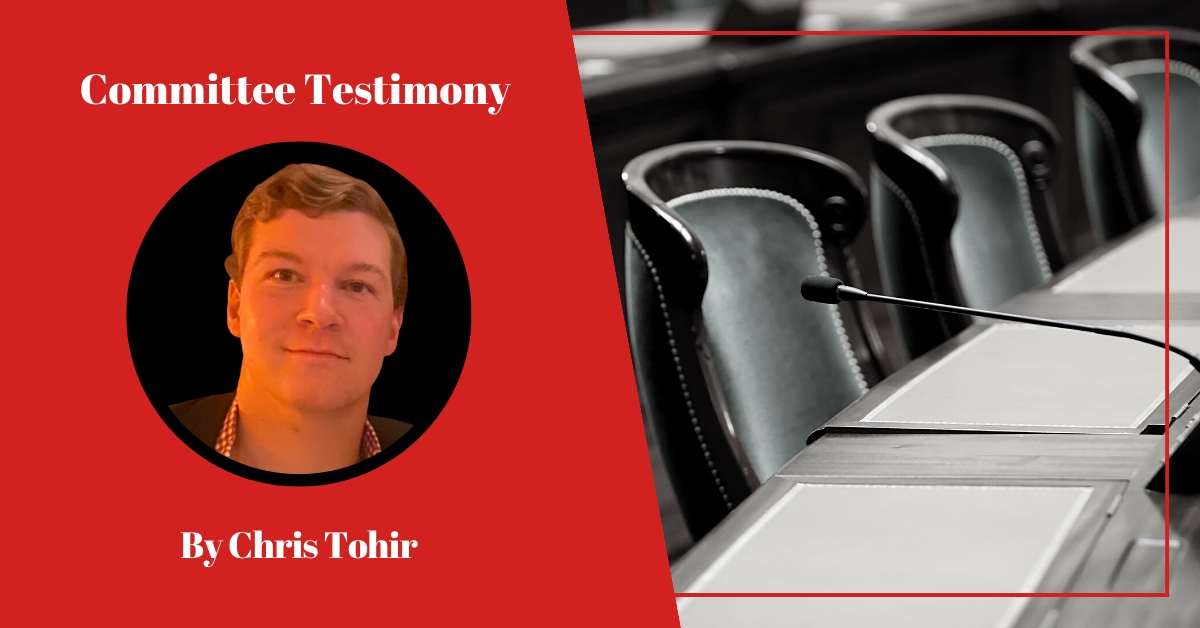Thank you for the opportunity to testify before the Committee on Government Administration and Elections regarding S.B. 389, H.B 5087, H.B. 5133 and H.B. 5701. My name is Christopher Tohir and I am the legal and policy analyst at Yankee Institute, a policy organization that empowers the people of Connecticut to forge a brighter future for themselves and their families.
Ranked-choice voting (RCV) has gained traction in some states and municipalities over the last few years as an alternative to traditional plurality elections. As of 2022, Alaska and Maine are the only states that have implemented RCV in both its federal and state elections. Theoretically, RCV sounds like an excellent way to ensure voter preferences are honored in elections. But on closer scrutiny, RCV presents serious Tlaws — some of which actually undermine the democratic principles upon which our system is founded.
Yankee Institute opposes these four bills that collectively call for instituting RCV for certain municipal, state, and federal elections. Contrary to the popular belief that RCV can amplify the voice of voters, the “exhausted ballots” phenomenon can prevent certain voters from having their votes counted. Exhausted ballots occur when voters’ ballots are untallied because none of their marked candidates remain in the contest. Because these votes are not tabulated in the Tinal round, those voters’ ballots would not count. Hence, it is as if they never voted on election date — they have been effectively disenfranchised. This could happen to some voters without their even having realized it.
By contrast, the current plurality election system in Connecticut is easy to understand: a voter chooses one single favorite candidate and votes for him or her. Many voters — busy with jobs, families, and other responsibilities — lack detailed knowledge about candidates. A RCV system ampliTies this problem because in order to participate meaningfully in the system (and potentially avoid disenfranchisement), voters must be informed about multiple candidates. Ignorance about a candidate is punished under a RCV system — and
incumbents with greater name recognition will be the primary beneTiciaries, along with candidates supported by special interests with the means and motivation to promote them.
After Maine implemented RCV, voter confusion was so prevalent that supporters of the system felt compelled to publish a 19-page instruction manual to help voters understand the process.1 Because Tilling out a RCV ballot can be difTicult, error rates for RCV elections are often higher than those of plurality elections.2 The convoluted process of RCV results in many voters having their ballots eliminated because they failed to follow its complicated instructions. As evidenced by San Francisco’s 2004 RCV experiment, this disproportionately affects African Americans, Latinos, voters with less education, and those whose Tirst language was not English.3 Essentially, the confusing nature of RCV leads to more disenfranchisement and an overall less democratic electoral process. It is, in common parlance, a threat to our democracy.
Proponents often fallaciously claim that under the RCV system candidates need a majority of votes to win. It should be noted, however, that there have been examples of candidates winning without securing a majority due to ballot exhaustion, such as during Maine’s 2018 Second Congressional Election.4 Moreover, a study published in 2014 highlighted that RCV changed 17% of the outcomes – meaning the top vote receiver in a plurality has the potential of losing in RCV scenarios.5 Therefore, not only does RCV not always produce a majority, it can also distort election results.
Finally, it is worth noting that under the RCV system, candidates are incentivized to strive to become voters’ second or third choice. Those who articulate clear, principled stands risk offending some portion of the electorate, and being eliminated as a result. But this system results in the election of leaders without mandates — and often, without platforms that are clear to the electorate. They may also be people who, untethered by a set of coherent principles, become the easy pawns of powerful special interests.
1 “Voting in Maine’s Ranked Choice Election.” Town of Wiscasset. 2018.
https://wiscasset.s3.amazonaws.com/uploads/originals/rankchoicevoting.pdf
2 RangeVoting.org “Spoilage and error rates with range voting versus other voting systems.” The Center for Range Voting (2019), https://rangevoting.org/SPRates.html.
3 Neely, Francis, Lisel Blash, and Corey Cook. “An Assessment of Ranked-Choice Voting in the San Francisco 2004 Election Final Report.” FairVote. May 2005. http://archive.fairvote. org/sfrcv/SFSU PRI_RCV_final_report_June_30.pdf.
4 “2018 Second Congressional District Election Results.” Maine Secretary of State.
2018. https://www.maine.gov/sos/cec/elec/results/2018/updated-summary- report-CD2.xls.
5 Burnett, Craig M., and Vladimir Kogan. “Ballot (and Voter) “exhaustion” under Instant Runoff Voting: An Examination of Four Ranked-choice Elections.” Electoral Studies. November 18, 2014.https://www.sciencedirect.com/science/article/pii/S0261379414001395.
Legislators’ commitment to free, fair and inclusive elections is commendable — and Yankee Institute shares it. But before these RCV bills receive more serious legislative consideration, it is imperative to recognize that it is not a viable solution to the issues of disenfranchisement or ensuring that free and fair elections exist. What’s more, they present real and present dangers to our existing system. Before committing to an overhaul of our election system, legislators would be wise to contemplate other ways to address these issues.
Thank you.

